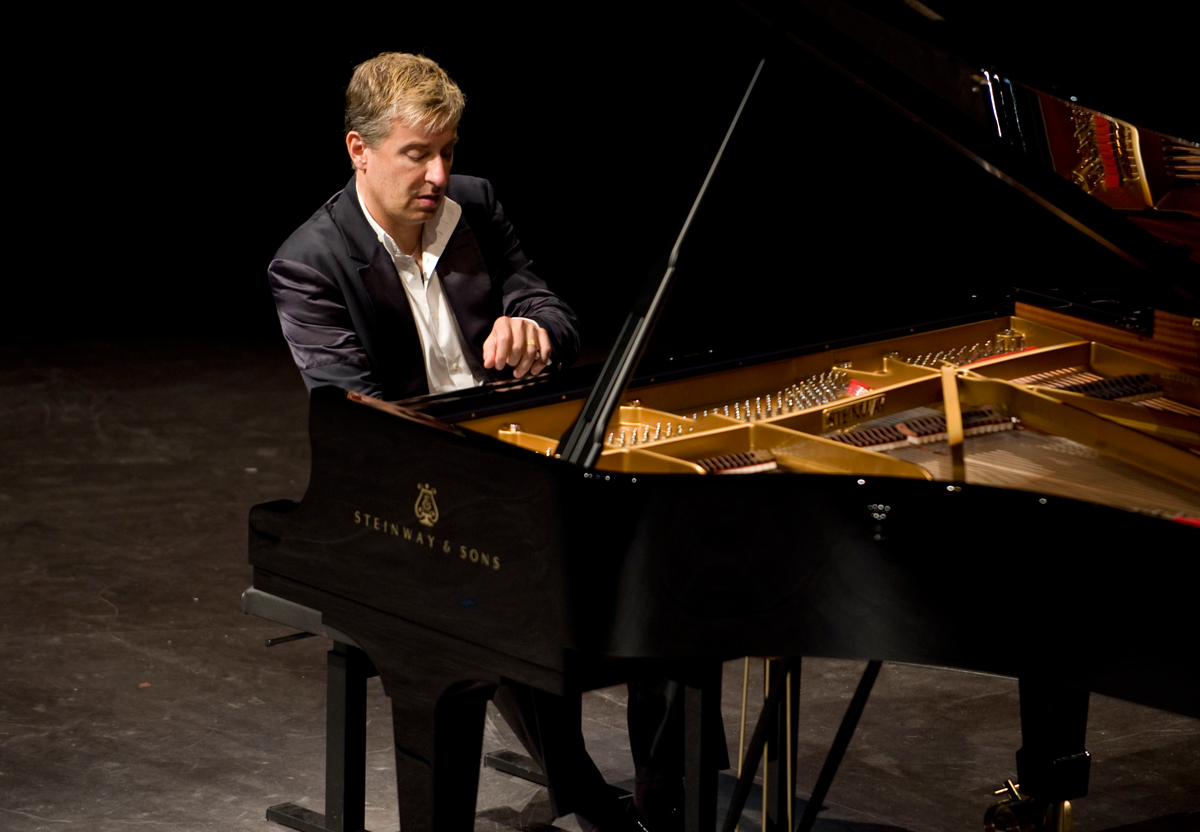“Les sons et les parfums tournent dans l’air du soir.”
Charles Baudelaire, “Harmonie du soir,” Les Fleurs du mal (1857)
The title of the first of the 12 Preludes in Book II of Debussy’s Préludes is “Brouillards”—and Jean-Yves Thibaudet’s audience at Disney Hall was feeling it, as foggy mists settled into the streets around downtown, Bunker Hill and the entire Los Angeles basin. But what Debussy actually plunges into—after the almost epic metamorphosis of sound and sensation conjured by the 12 preludes of the first book that precede it—is a starry nebula of polytonality that ultimately cycles us into a musical terrain that remains as tonally adventurous today as it was when first composed more than a century ago. Thibaudet’s performance of the complete Debussy Préludes—crystalline in its clarity and articulation, and quite possibly the best performance I’ve ever heard live or recorded—carried us through a domain that, notwithstanding clear allusions to the impressionistic (e.g., “La cathédrale engloutie,” with its inevitable Monet associations) felt more surreal in spirit (closer to say, Tanguy), and setting aside its visual and literary cues (e.g., “Les fées sont d’exquises danseuses” inspired by J.M. Barrie), almost entirely abstract.
Debussy’s titles were offered more as suggestive cues, yet both composition and overall tonality indicate approaches that begin in the natural world, in the sensations of terrestrial nature, atmosphere, observable incident—so it’s almost by default that we hear these chords and modal or chromatic sequences as tracing the contours of a physical terrain or force, whether the ‘hillsides of Anacapri’ or (more abstractly) ‘what the West wind has seen’. Debussy has us reaching for the sonic ‘treetops’, listening for a dance rhythm or distant sentinel; and Debussy also lets us into the musical after-thoughts that follow upon these atmospheric reveries (we hear the ‘blue’ in those notes as we might see it in mist-enshrouded hills), the deliberations and regrets that pace our metamorphoses. (Debussy’s mood/tempo/dynamic markings are also illustrative (e.g., ‘animated and tumultuous’ for the “West Wind”).) Thibaudet’s playing Wednesday evening gave those contours real edge and definition, the chromatic coloration a jewel-like clarity and brilliance, without holding back the ‘tumult’ of arpeggiated chords, repeating clusters, and fast-moving chromatic passages—I have never heard those ‘rolling thunder’ “West Wind” and ‘treetop singing’ passages taken at such a breathtaking velocity or with comparable authority.
Setting aside the brouillards of Wednesday evening in Los Angeles, if I felt alternatively fog-bound and electrified in Thibaudet’s rendering of the Book II Préludes, it may have had something to do with the fact that I was not remotely as familiar with them. (For the record, there were at least four I was hearing for the first time.) This may (or may not) have something to do with the fact that the Book I Préludes are more frequently played and recorded (also that my copy of Thibaudet’s comprehensive Debussy recording is missing Volume I). Either way, it was a delight to be taken through brouillards, feuilles and feux (“d’artifice”) in Thibaudet’s gifted hands. Debussy starts us in a kind of rolling cluster before moving to a far darker, earthen place in “Feuilles mortes,” heading down register, before reaching for a suggestion of the elegiac. Successive preludes variously dance undulantly and furiously, before returning us to reflections of moonlight and ocean waves—revelatory on every level in Thibaudet’s playing. (His Ondine would have sent sailors to the rocks.) With “Hommage à S. Pickwick Esq. P.P.M.P.C.,” Debussy joined the Germans (he always felt took themselves too seriously) in embroidering the English National Anthem into fresh variations—which then morphed into something far removed from that musical line. The last four of the Preludes take us to the furthest dazzling reaches of Debussy’s polytonality—seemingly to the brink of atonality—and Thibaudet’s brilliantly articulated exposition left some of us gasping.
It’s one thing to record the Préludes (and many have—especially the Book I preludes); quite another to make a single recital of them; but Wednesday evening’s recital was clearly of a piece with many of the challenges—physical as well as simply musical or intellectual—Thibaudet has taken on in recent years. After relatively recent performances of, among other things, the Olympic-grade Messiaen Turangalîla-Symphonie, the scarcely less strenuous Bernstein Age of Anxiety (a signature piece for him), Thibaudet clearly welcomes these challenges. But Thibaudet also managed to reveal through the Préludes a kind of poetic retracing of the musical landscape through its metamorphoses of the last century, while looking through them to an unknowable future. There was only one encore—the Elgar Salut d’Amour; but what he was sending us out into les brouillards with was courage as much as love—and we took it to heart.

